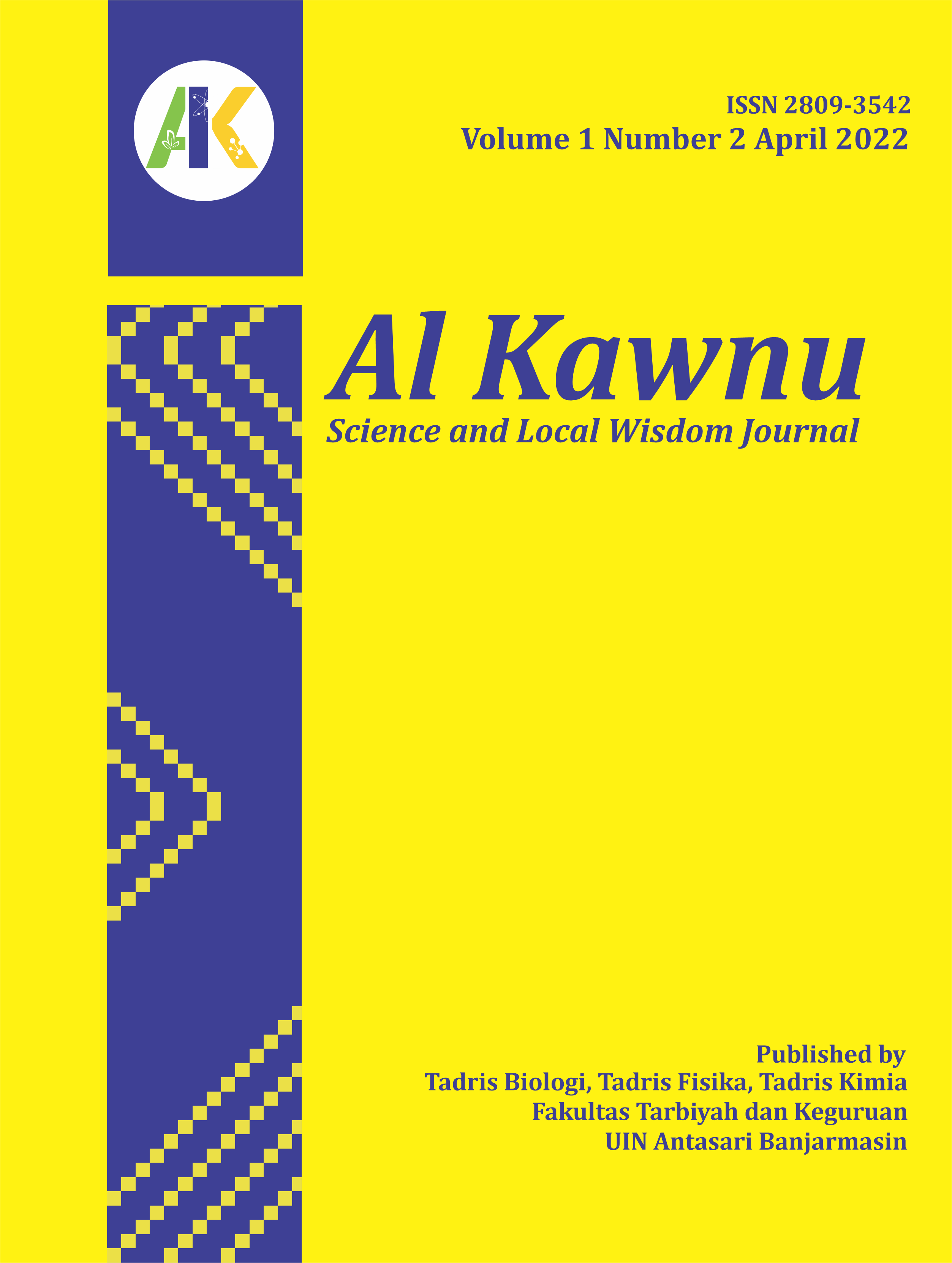Pengaruh Daun Bayam Merah Amarantanthus tricolor L sebagai Material Bioscreen Anti-radiasi pada Laptop
DOI:
https://doi.org/10.18592/ak.v1i2.6209Abstract
The era of the industrial revolution 4.0 and society 5.0 has necessitated the use of technology in life. For academics, the use of technology is very dependent on laptops. The use of laptops for various purposes is increasing. However, the electromagnetic radiation emitted by laptops can harm the wearer. Reducing radiation on laptops can be pursued through the use of environmentally friendly renewable materials, such as spinach leaf bioscreen. This study aims to determine the effect of Amaranthus tricolor L red spinach leaves as an anti-radiation bioscreen on laptops. This study uses a pre-experimental method with a one group pre-test post-test design. The amount of electromagnetic radiation was measured using an electromagnetic radiation detector DT-1130. Data analysis used correlation test and simple linear regression test. The results of the Pearson product moment analysis obtained a correlation coefficient value of r = -0.999 which means that there is a very strong relationship between the increase in the number of spinach leaves and the decrease in laptop radiation. Regression test shows the amount of radiation (y) can be predicted from the number of leaves (x) with the equation y=1420,106–26,311x, meaning that an increase in the use of spinach leaves by 1cm2 will reduce radiation by 26,311µW. The results of this study indicate that spinach leaves have the potential as a bioscreen material in reducing exposure to electromagnetic radiation on laptops.References
Brodić, D., Amelio, A., 2017. Time evolving clustering of the low-frequency magnetic field radiation emitted from laptop computers. J. Int. Meas. Confed. 99, 171–184. https://doi.org/10.1016/j.measurement.2016.12.030
Chandrappa, H, Bhajantri, RF, Prarthana, N. 2020. Simple fabrication of PVA-ATE (Amaranthus tricolor leaves extract) polymer biocomposites: an efficient UV-Shielding material for organisms in terrestrial and aquatic ecosystems. Opt Mater. 109, 110204. https://doi.org/10.1016/j.optmat.2020.110204
Fajar Sayekti, H., Dwi Rahayu, S., Rahayu, A., Sulistyowati, A., 2016. Bahaya Radiasi Layar Laptop Terhadap Ketajaman Penglihatan. J. Ilm. WUNY 18, 7–8. https://doi.org/10.21831/jwuny.v18i2.10011
Iqbal, A., Olariu, S., 2020. A Survey of Enabling Technologies for Smart Communities. Smart Cities 4, 54–77. https://doi.org/10.3390/smartcities4010004
Kabir, F., Bhuiyan, M.M.H., Manir, M.S., Rahaman, M.S., Khan, M.A., Ikegami, T., 2019. Development of Dye-sensitized Solar Cell Based on Combination of Natural Dyes Extracted from Malabar Spinach and Red Spinach. Results Phys. 14, 1–7. https://doi.org/10.1016/j.rinp.2019.102474
Kesari, K.K., Agarwal, A., Henkel, R., 2018. Radiations and male fertility. Reprod. Biol. Endocrinol. 16, 1–16. https://doi.org/10.1186/s12958-018-0431-1
Khandaker, L., Akond, A.S.M.G.M., Ali, M.B., Oba, S., 2010. Biomass Yield and Accumulations of Bioactive Compounds in Red Amaranth (Amaranthus tricolor L.) Grown Under Different Colored Shade Polyethylene in Spring Season. Sci. Hortic. (Amsterdam). 123, 289–294. https://doi.org/10.1016/j.scienta.2009.09.012
Li, H., Deng, Z., Liu, R., Zhu, H., Draves, J., Marcone, M., Sun, Y., Tsao, R., 2015. Characterization of phenolics, betacyanins and antioxidant activities of the seed, leaf, sprout, flower and stalk extracts of three Amaranthus species. J. Food Compos. Anal. 37, 75–81. https://doi.org/10.1016/j.jfca.2014.09.003
Maryana, N., Amri, C., Muryani, S., 2018. Pengaruh Bioscreen Anti Radiasi dari Tanaman Sansevieria trifasciata lorentii mein liebling terhadap Penurunan Radiasi Laptop. J. Kesehat. Lingkung. 9, 111–115.
Naren, Elhence, A., Chamola, V., Guizani, M., 2020. Electromagnetic Radiation Due to Cellular, Wi-Fi and Bluetooth Technologies: How Safe Are We? IEEE Access 8, 42980–43000. https://doi.org/10.1109/ACCESS.2020.2976434
Olaoye, M.A., Aluko, T.J., Rabiu, J.A., Jegede, O.A., Adeleke, O.O., 2016. Evaluation of Annual Effective Dose Due to Ingestion in Some Commonly Consumed Vegetables in Lagos State, Nigeria. Jordan J. Phys. 9, 109–112.
Onday, O., 2019. Japan’s Society 5.0: Going Beyond Industry 4.0. Bus. Econ. J. 10, 1–6. https://doi.org/10.4172/2151-6219.1000389
Sarker, U., Oba, S., 2020. Leaf Pigmentation, Its Profiles and Radical Scavenging Activity in Selected Amaranthus tricolor Leafy Vegetables. Sci. Rep. 10, 1–10. https://doi.org/10.1038/s41598-020-66376-0
Shariff, I., Dwiratna, S., Yamin, B.M., 2020. Crystallography in agriculture: Green and red spinach (Amaranthus tricolor) grown on soil and hydroponic, in: IOP Conference Series: Earth and Environmental Science. pp. 1–11. https://doi.org/10.1088/1755-1315/443/1/012021
Wu, G., Shen, Y., Gu, F., Lu, H., Xie, Y., Zhang, J., 2009. Dye-sensitized Solar Cell Using Natural Dyes Extracted from Spinach and Amaranth, in: Optics InfoBase Conference Papers. pp. 1–2. https://doi.org/10.1364/acp.2009.wl43
Yaacob, J.S., Hwei, L.C., Taha, R.M., Mat Nor, N.A., Aziz, N., 2012. Pigment analysis and tissue culture of Amaranthus cruentus L. Acta Hortic. 958, 171–178. https://doi.org/10.17660/ActaHortic.2012.958.20




